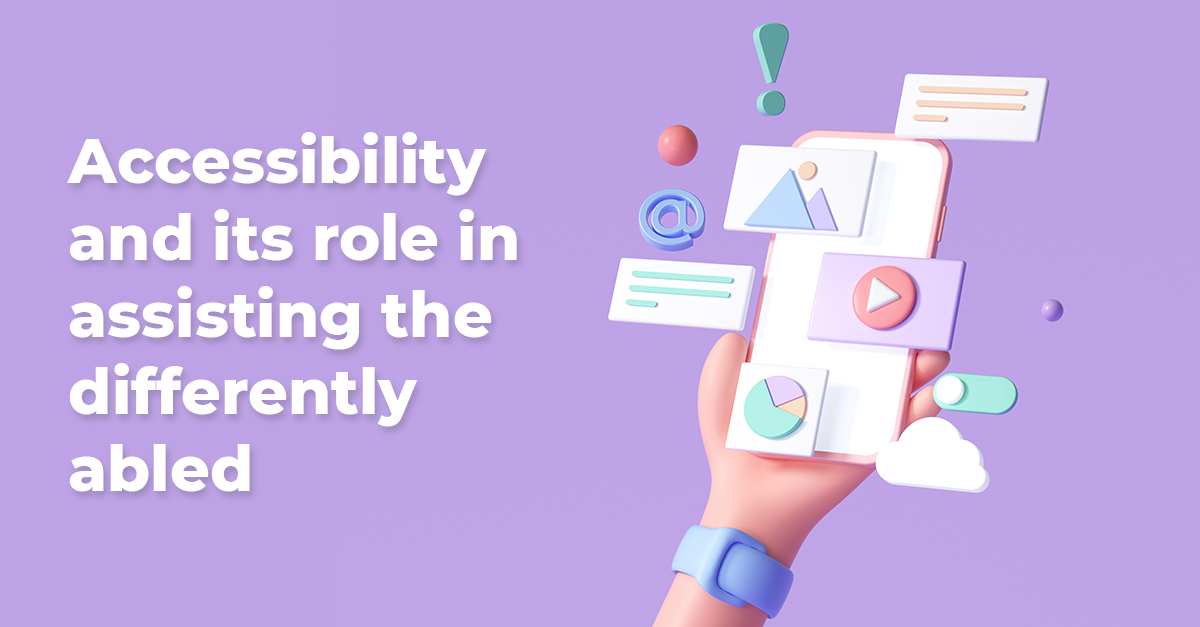The first time I started thinking about accessibility was when my husband defeated his brother in a Mortal Kombat* game. You will probably ask, “Pfff, what’s so special about that?” I will tell you – it was the way he did it. He was playing without seeing the screen. You heard me right – he grabbed the controller, turned his back to the TV, and relied only on his listening skills.
After two fights – both of which he won, I wondered how the game must be designed to play without visual facilitation. I started looking for the answer. My research made me realize that this game was not an exception. There are other AAA games** that were created to be played by a wider group of users, and by that, I mean the users with permanent or temporary disabilities.
That brings us to the definition:
"Accessibility is the design of products, devices, services, vehicles, or environments so as to be usable by all people, including those with disabilities."
Being a UX designer, I have to take care of a lot of different fields that are connected with user experience. Inclusivity, especially accessibility, is one of the major domains that must be considered during design and development. Four main guiding principles of accessibility: Perceivable, Operable, Understandable, and Robust (POUR) define its standard. The accessible design, especially on the web, has real, tangible benefits for users. It ensures that everyone can use a particular website or application, regardless of the device they are on or the disabilities they may have. It not only takes into account a diversity of devices but also considers factors such as Internet speed because not all users have high-quality Wi-Fi connections.
To provide accessibility on the website or app, we use Assistive Technologies (AT). These are items, pieces of equipment, software programs, or product systems that are used to increase, maintain, or improve the functional capabilities of persons with disabilities.
When we look for accessible solutions, we usually take into consideration 4 types of disabilities.
- visual (color or complete blindness, low vision)
- auditory (difficulties with hearing or deafness)
- motoric (weakness and limitations of muscular control)
- cognitive and neurological (e.g., mental health disabilities, memory impairments, learning disabilities)
Each type of disability has its own and general AT functions to ensure that websites, applications, and similar everyday items can be accessed by users with both permanent and temporary disabilities. In addition, regular users can find this experience more enjoyable without any restrictions.
One of the best solutions to manage visual problems is to set a high contrast on the site. There are tools that measure the color contrast between two different colors. For example, we can check if the main content is visible enough on the background that has been set. For users with hearing impairments, we can add closed captions (CC) in videos or pay more attention to visual notifications while designing a website or an app.
Users with physical disabilities may need a Voice interface and multi-device responsiveness. For people with cognitive and neurological disabilities, we should prepare content in simple, native language, assisted by iconography and without walls of text.
There are a lot of other examples and ways to manage each of the cases, but what I want to highlight is you do not need to have a disability to benefit from any of these AT features.
Have you ever had trouble listening to a movie in a loud place?
Did the sun blind you and brighten your mobile screen when you were outside, so you could not use the device?
You were on the road and used navigation while driving the car?
Were you sick and weak while trying to make an appointment with a doctor?
I bet we would have experienced at least one of the situations. So, when I ask myself, “why do I care about accessibility?”, I think about everyone with or without disabilities who can benefit from the accessibility solutions, making our everyday activities easier.
* A video fighting game
** A classification used within the video gaming industry to signify high-budget, high-profile games that are typically produced and distributed by large, well-known publishers.

